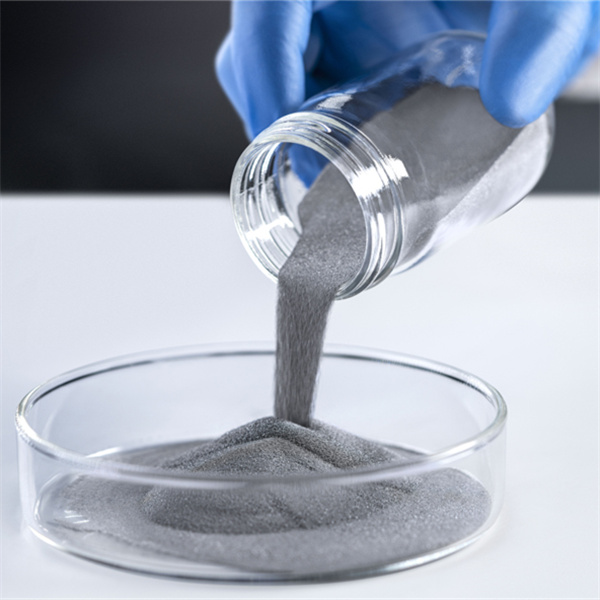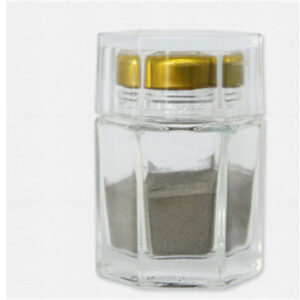aluminum powder for 3d printing is increasingly used in additive manufacturing to create lightweight, high-strength parts across industries. This guide provides a comprehensive overview of aluminum powders for 3D printing.
Introduction to Aluminum Powder for AM
Aluminum is a popular material for 3D printing due to:
- Low density – 2.7 g/cc
- High specific strength
- Excellent thermal and electrical conductivity
- Kháng ăn mòn tốt
- Weldability and machinability
- Low material costs
Key properties of aluminum powder:
- Spherical powder morphology
- Phân phối kích thước hạt được kiểm soát
- High purity levels over 99.5% Al
- Derived from recycled aluminum in some cases
- Available for binder jetting, DMLS, SLM processes
Aluminum powder enables printing of lightweight components impossible to manufacture by other methods.

Aluminum Powder Types for Additive Manufacturing
Various aluminum alloy powders are used for AM:
Aluminum Powder Types for 3D Printing
| Kiểu | Sự miêu tả | Các ứng dụng |
|---|---|---|
| ALSI10MG | Cast alloy with silicon and magnesium | Không gian vũ trụ, ô tô |
| Què | Moderate strength alloy with Si, Mg | Industrial machines |
| 6061 | Medium strength wrought alloy with Mg, Si | Custom brackets, fixtures |
| 5XXX series | 5% magnesium for strength | Tooling, marine |
| Pure aluminum | Unalloyed aluminum >99.7% | Thermal management, electrical |
Specialized alloys are being qualified for additive techniques to match conventional alloy properties.
Composition of aluminum powder for 3d printing
Typical composition of aluminum alloy powders for AM:
Composition of Aluminum Print Powders
| Hợp kim | Al | Mg | Và | Fe | Cu | Mn |
|---|---|---|---|---|---|---|
| ALSI10MG | BAL. | 0.2-0.5% | 9-11% | <0.55% | & lt; 0,05% | <0.45% |
| Què | BAL. | 0.1-0.5% | 6-8% | & lt; 1% | & lt; 0,1% | & lt; 0,1% |
| 6061 | BAL. | 0.8-1.2% | 0.4-0.8% | <0.7% | 0.15-0.4% | <0.15% |
| 5056 | BAL. | 4.5-6% | <0.4% | & lt; 0,5% | & lt; 0,1% | 0.1-0.5% |
Silicon improves castability and fluidity. Magnesium enhances strength. Impurities are minimized for AM suitability.
Key Properties of Aluminum Print Powder
Properties of Aluminum Print Powder
| Tài sản | Giá trị |
|---|---|
| Tỉ trọng | 2,7 g/cc |
| Độ nóng chảy | 475-650°C |
| Dẫn nhiệt | 120-180 W/mK |
| Tinh dân điện | 35-38 MS/m |
| Sức căng | 230-520 MPa |
| Kéo dài | 3-8% |
| Mô -đun Young ’ | 68-72 GPA |
| Độ cứng | 65-100 HB |
The properties make aluminum suitable for lightweight, thermally and electrically conductive printed parts.
Aluminum Powder Characteristics for AM
Aluminum Powder Characteristics
| Tham số | Details | Significance |
|---|---|---|
| Hình dạng hạt | Hình cầu | Improves flowability |
| Phân bố kích thước | 10-100 μm | Controls part resolution |
| Mật độ rõ ràng | 1.2-1.8 g/cc | Affects final part density |
| Lưu lượng dòng chảy | 20-30 s/50g | Indicates powder spreadability |
| Oxide content | < 3% | Impacts powder flow and sintering |
| Hàm lượng hydro | < 0.15% | Reduces porosity in parts |
Sphericity and controlled particle size distribution are critical for aluminum AM powders.
Specifications for Aluminum Print Powder
Aluminum Powder Specifications
| Tham số | Range/Limit | Tiêu chuẩn |
|---|---|---|
| Kích thước hạt | 10-63 μm | ASTM B214 |
| Mật độ rõ ràng | > 0.80 g/cc | ASTM B212 |
| Tốc độ lưu lượng hội trường | < 30 s/50g | ASTM B213 |
| Oxide content | < 3% | ASTM B237 |
| Mg, Si composition | Alloy limits | ASTM B937 |
| Tạp chất | Fe, Cu, Mn limits | ASTM B937 |
Key powder characteristics and composition are verified against standardized specifications.
Benefits of Using aluminum powder for 3d printing
Benefits of Aluminum for 3D Printing
- Lightweighting – high strength-to-weight ratio
- Reduced material waste
- Increased design freedom and part consolidation
- Elimination of tooling and machining
- On-demand and just-in-time fabrication
- Độ dẫn điện và điện cao
- Kháng ăn mòn tuyệt vời
- Good finishing and post-processing
- Cost-effectiveness for mid-volume production
Aluminum powder additive manufacturing provides significant advantages over conventional techniques for lightweight structural and functional parts.
Applications of 3D Printed Aluminum Components
Industry Applications of 3D Printed Aluminum
| Ngành công nghiệp | Các thành phần |
|---|---|
| Không gian vũ trụ | Airframe brackets, heat exchangers, turbine blades |
| Ô tô | Chassis, powertrain parts, custom interiors |
| Công nghiệp | Robotics, tooling, fixtures, mounts |
| Người tiêu dùng | Electronics housings, drone bodies |
| Architecture | Decorative panels, wall cladding |
| Thuộc về y học | Cấy ghép chỉnh hình, chân giả |
Additive manufacturing enables previously impossible aluminum geometries, consolidation, and customization across diverse sectors.
How to Choose Aluminum Printer Powder Suppliers
Choosing an Aluminum Powder Supplier
- Experience producing AM powders
- Capability to customize alloys and particle size
- Consistent quality and reproducibility
- Competitive and transparent pricing
- Chuyên môn kỹ thuật và hỗ trợ khách hàng
- Batch analysis and certification data
- Inventory and shorter lead times
- Capability to meet demand fluctuations
- Responsible and sustainable sourcing
A reliable aluminum powder partner delivers customized and qualified powders tailored to application requirements.
Aluminum Print Powder Manufacturers
Aluminum Powder Suppliers for AM
| Công ty | Vị trí |
|---|---|
| Sandvik | nước Đức |
| Ap & amp; c | Canada |
| HOÀN TOÀN | Hoa Kỳ |
| Phụ gia thợ mộc | Hoa Kỳ |
| Nâng cao bột & amp; Lớp phủ | Hoa Kỳ |
| Công nghệ LPW | Vương quốc Anh |
These leading suppliers provide controlled particle sizes, spherical morphology, custom alloys, and extensive qualification data to ensure optimal prints.
Cost Analysis of Aluminum Print Powder
Aluminum Powder Cost
| Cấp | Cost per kg |
|---|---|
| Pure aluminum | $50-$100 |
| ALSI10MG | $55-$120 |
| 6061 alloy | $60-$150 |
| 5XXX series | $65-$140 |
Prices depend on alloy composition, impurity levels, particle characteristics, and purchase volume. Significant cost savings versus titanium alloys.
Comparison of Aluminum with Other Print Materials
Comparison of Aluminum Powder with Alternatives
| Tham số | Nhôm | Titan | Thép không gỉ |
|---|---|---|---|
| Density (g/cc) | 2.7 | 4.5 | 8.0 |
| Tensile Strength (MPa) | 230-520 | 900-1200 | 500-1000 |
| Thermal conductivity (W/mK) | 120-180 | 7-16 | 15-30 |
| Electrical conductivity (MS/m) | 35-38 | 2.4 | 1.5 |
| Cost per kg | $50-$150 | $200-$500 | $20-$50 |
| Khả năng in | Hội chợ | Khó | Xuất sắc |
Aluminum provides the best combination of strength, weight, conductivity and cost. Stainless steel is easier to print but heavier. Titanium is challenging.

Các câu hỏi thường gặp
Q: What is the typical particle size for aluminum AM powder?
A: Particle sizes from 10-45 microns are common, with a tight distribution around 20-35 microns for optimal flow and high resolution.
Q: What aluminum grades are compatible with 3D printing?
A: AlSi10Mg, AlSi7Mg, and 6xxx series alloys like 6061 have been qualified. 5XXX grades are also gaining popularity for higher strength.
Q: Which AM process is best suited for aluminum?
A: DMLS, SLM, and binder jetting allow aluminum printing. Binder jetting provides faster build speeds but DMLS and SLM offer better mechanical properties.
Q: Does aluminum powder require special handling precautions?
A: Finely divided aluminum can be flammable or explosive in air. Inert gas glove boxes are recommended for storage and handling.
Q: Are heat treatments required for 3D printed aluminum?
A: Yes, solution treatment, aging, annealing, or stress relieving may be performed to achieve desired material properties and microstructures.
Q: What surface finishes can be achieved with aluminum AM parts?
A: As-printed finishes around 15 microns Ra can be further smoothed to under 1 micron Ra using media blasting, grinding, sanding, and polishing.
Q: Can aluminum printed parts match bulk alloy properties?
A: With optimized parameters and post-processing, additive parts can achieve mechanical properties on par with or better than traditionally processed aluminum alloys.
Q: What design principles apply for aluminum AM?
A: Print orientation, minimal supports, generous internal radii, and accounting for thermal stresses improves results. Wall thicknesses over 1 mm are preferred.




